The Foggy Pew
- John O'Brien
- November 28, 2019
- Edited 4 months ago
Table of Contents

Cleveland Irish: The Foggy Pew
By Francis McGarry
“Holy Catholic Church, or the Communion of Saints in the Mystical Body of Christ- a sermon by Bishop Mcllvaine, for sale by MC Younglove.”
That is how the advertisement read in the Plain Dealer on August 5th, 1845, just before the ad for a horse of “good moral and physical character.”
Yeah, a horse. MC Younglove was more than just a book salesman; he owned a substantial property just east of Euclid and Dodge. We know Dodge as East 17th. Saint Peter’s Catholic Church has been on the corner of Dodge and Superior since 1854. It was a place for German Catholics to worship, just eight blocks east of the Cathedral. Saint Columbkille and Immaculate Conception were at 26th and 41st respectively.
This relative proximity did not cause much issue, which was not always the case in mid 19th Century America. In Pennsylvania during June of 1848, Germans and Irish rioted against one another with muskets, swords, clubs and stones with “the full intention of taking life.”
Many were seriously injured and several prosecutions were a result of the melee. However, the Catholic bond kept the Irish and the Germans united for the most part. United, meaning they were attacked collectively by Nativists.
Protestant violence against Catholics in America was nothing new. It occurred throughout the 19th Century in various forms of severity. In 1831 Protestants burned down Saint Mary’s Church in New York City. The increase of both Irish and German immigration resulted in an increase in anti-Catholic violence in America.
The Kensington Riots occurred in Philadelphia in 1844. Nativists and Irish clashed near Kensington’s Nanny Goat Market for three days. Catholics opposed the exclusive use of the King James Bible in public schools.
Gunshots rang out in the market; fists and bricks flew. Irish homes were destroyed. St. Michael’s and St. Augustine’s Catholic churches were burnt to the ground. Three weeks later St. Phillip Neri was the target of Nativists, but the state militia intervened again. 16 people were killed in the riots.
On August 7th, 1854 in St. Louis, Protestants attempted to suppress Irish voting. They gathered in the Irish 5th ward. Nativist mobs attacked residents and destroyed Irish homes and businesses. Irish steamboat workers fought back with rocks, bricks and gunfire. Ten people were killed, 30 or more injured and nearly 100 Irish homes and buildings were damaged.
The Cincinnati Riots of 1855 were more directed at the German population of the Queen City. Nativist attacked a German neighborhood and destroyed ballots in two wards. The Germans organized and pushed out the invading Protestants. Nativists died a quick death in the press and marginalization of the local movement.
In Louisville on August 6th, 1855, Protestant mobs attacked Irish and Germans neighborhoods on Election Day. “Bloody Monday” resulted street fighting and a shootout on Main Street. The German Parish of St. Martin was attacked and Irishmen were attacked on the street by Nativists. In the end, 22 people were killed, according to the press, and not a single conviction. In 1995 the Louisville AOH applied for a historical marker near the location were Patrick Quinn was shot and thrown back into a burning row house on what was called Quinn’s Row.
In Cleveland there was ethnic violence. However, there were no events that rose to the level of a riot. Anti-Catholic press, including the Cleveland Leader, was retorted by the Catholic press. Large audiences of Clevelanders attended anti-Catholic rallies with anti-Catholic speakers.
On March 7th, 1855, Clevelanders in the 4th and 6th wards gathered to show support for the Nativist movement and “general” John Crowell. They rallied against Catholic “foreigners” and looked to enlist Protestant Orangemen from Ireland and Protestant Germans to their cause.
The Orangemen needed no prompting. Riots occurred in Montreal, New York, New Jersey and Massachusetts in the 1870s. Cleveland had Orangemen lodges and representation in city government. However, still no riots.
This is not what consumed my thoughts during Octoberfest. It is what I shared with my niece who was just confirmed and received her first communion on the same day. Her maternal family is Lutheran.
It was a great Mass seeing 52 newly confirmed young folks. The Bishop gave a homily about the seven gifts of the Holy Spirit. He even went flashback and said Holy Ghost, twice. I like it when people say Holy Ghost and I am not completely sure why.
What I don’t like is when people wear hats in church. We are not talking Easter. We are not talking grandma. We are not talking for medical reasons. Some kid had on a skull cap and took communion. Father Bob served it up which doesn’t shock me because he downloads his homilies and sometimes for the wrong readings. First time that happened I had been at the Nook the night before and I thought I was the one at fault. Not so fast my friend.
I am a Eucharistic Minister and would refuse to administer the blood or the body if someone had a skull cap on. As I talked with my niece about Catholic history in America outside of the pew and how she will never wear a hat in church, others who overheard me shared that many folks take their handgun to Mass.
To say taken aback does not do justice to the perplexion that overwhelmed me. Apparently, in some parishes it is common. I did not know. Apparently, “church is where they get you.” I did not know, and still not sure on who “they” is.
No judgement here, come as you are. It just never occurred to me. If we are talking 1850, then I get it. If Patrick Quinn said he kept a pistol on him, then so be it, giddy up. After reflecting, it is a good thing I don’t. That kid with the skull cap would be in trouble.
*Francis McGarry holds undergraduate degrees from Indiana University in Anthropology, Education and History and a Masters in Social Science from the University of Chicago. He is an assistant principal and history teacher. Francis is a past president of the Irish American Club East Side. He is the founder and past president of the Bluestone Division of the Ancient Order of Hibernians.




